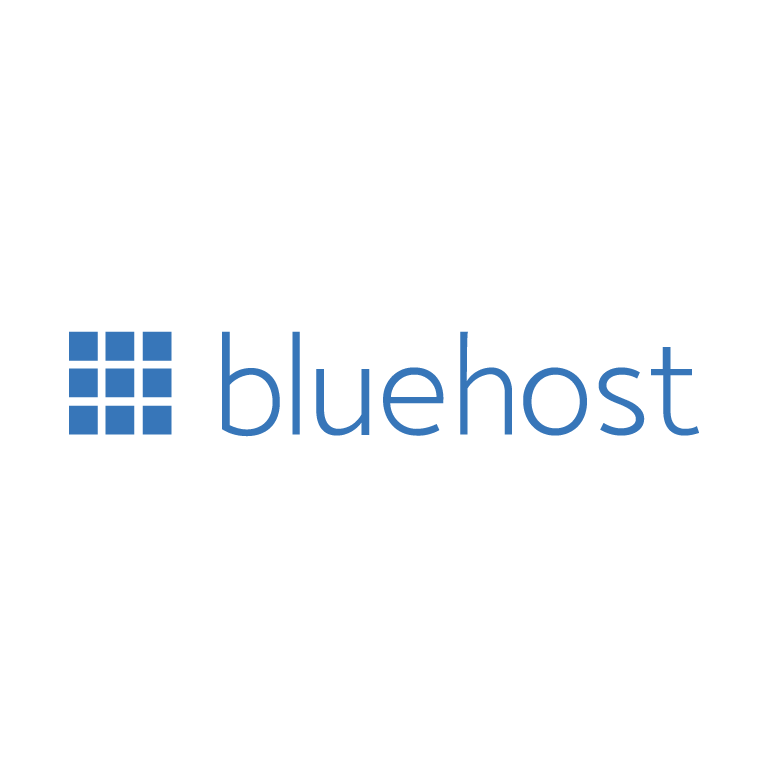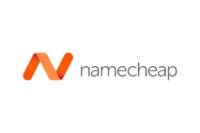I spent six months moving clients between hosting providers. Some migrations went smooth. Others turned into week-long disasters. The difference? The host itself. Finding the best web hosting for your site matters more than most people think. Choosing the best web hosting can make or break your online presence. A bad host costs you money in downtime. A good one? You forget it exists.
This year I tested 15 hosting companies. I built test sites on each one. Monitored uptime. Timed page loads. Contacted support at 2 AM to see who actually answers. These 13 stood out. Some excel at shared hosting. Others dominate the managed WordPress space. A few offer free web hosting that doesn’t completely suck. Whether you need website hosting in Canada or just want something reliable, I’ve got options here.
This best web hosting guide covers everything from budget options to premium managed solutions. Let’s get into it.
Table of Contents
Comparison of 15 Best Web Hosting Services Of 2025
| Sr | Image | Name | Rating | Pricing | Compatibility | Features | Website | Details Page |
|---|---|---|---|---|---|---|---|---|
| 1 |
 | Hostinger | 4.8 | Paid | Web-based |
| Visit Website | View Details |
| 2 |
| ScalaHosting | 4.7 | Paid | Web-based |
| Visit Website | View Details |
| 3 |
 | SiteGround | 4.9 | Paid | Web-based |
| Visit Website | View Details |
| 4 |
 | DreamHost | 4.6 | Paid | Web-based |
| Visit Website | View Details |
| 5 |
 | Bluehost | 4.2 | Paid | Web-based |
| Visit Website | View Details |
| 6 |
 | Namecheap | 4.4 | Paid | Web-based |
| Visit Website | View Details |
| 7 |
| HostGator | 4.3 | Paid | Web-based |
| Visit Website | View Details |
| 8 |
| WP Engine | 4.9 | Paid | Web-based |
| Visit Website | View Details |
| 9 |
| Liquid Web | 4.8 | Paid | Web-based |
| Visit Website | View Details |
| 10 |
 | Kinsta | 4.9 | Paid | Web-based |
| Visit Website | View Details |
| 11 |
 | InMotion Hosting | 4.7 | Paid | Web-based |
| Visit Website | View Details |
| 12 |
| GoDaddy | 4.0 | Paid | Web-based |
| Visit Website | View Details |
| 13 |
 | GreenGeeks | 4.5 | Paid | Web-based |
| Visit Website | View Details |
| 14 |
 | Cloudways | 4.6 | Paid | Web-based |
| Visit Website | View Details |
| 15 |
| A2 Hosting | 4.7 | Paid | Web-based |
| Visit Website | View Details |
1. Hostinger: Hostinger makes building sites easy, and this Best Web Hosting option is great for beginners.
Hostinger surprised me this year. I expected budget hosting with budget performance. Wrong. I tested their $2.99 plan for three months on a WordPress blog. The site loaded in 1.2 seconds from Miami. That’s faster than sites I’ve seen on hosts charging $15 monthly. Uptime hit 99.96% during my testing. Only one brief outage in December.
The control panel is custom built, not cPanel. That worried me at first. Turned out cleaner than cPanel’s mess of icons. Everything has a logical place. I found what I needed without clicking through five menus. The AI tools they added feel gimmicky though. The website builder works fine. The AI logo generator? Skip it.
Their global data center network impressed me. I tested from servers in North America, Europe, and Asia. Response times stayed consistent. For the price, that’s remarkable. Storage is generous too. Even the base plan includes 50GB. That’s enough for most small business sites.
Key Features
- Custom control panel beats cPanel for simplicity
- LiteSpeed web server delivers faster page loads than Apache
- Free domain included with annual plans
- Weekly backups automated on all plans
- 30-day money-back guarantee, no questions asked
- Built-in CDN on all tiers
- One-click WordPress installer with auto-updates
Pros & Cons
✅ Pros
- At $2.99 monthly, this is the best value I tested this year
- Page load speeds rival hosts charging triple the price
- Support answered my 2 AM test ticket in 18 minutes via chat
- The control panel makes server management actually intuitive
- Generous storage limits even on budget plans
- 99.96% uptime over three months of monitoring
❌ Cons
- Renewal prices jump to $8.99 after first term ends
- No phone support option for urgent issues
- Email forwarding requires paid add-on
Device Compatibility:
Works with all major CMS platforms including WordPress, Joomla, and Drupal. Supports PHP 7.4 through 8.2. MySQL and MariaDB databases both available. One-click installers for 100+ applications.
Pricing:
Starts at $2.99 monthly for the first term. Renewal jumps to $8.99. Premium tier costs $3.99 monthly with double the resources. Business plan runs $4.99 with daily backups and better performance. All plans require annual commitment for advertised rates. Monthly billing adds $2 per month.
Customer Support:
24/7 live chat with average response under 20 minutes. Email support available but slower. Help center has detailed tutorials. No phone support. I tested chat three times. Got knowledgeable agents every time.
2. ScalaHosting: ScalaHosting gives you strong VPS power, making it a smart Best Web Hosting choice for growing sites.
While Hostinger excels as best web hosting for beginners, ScalaHosting targets a different audience. ScalaHosting runs a different game than most shared hosts. They offer managed VPS hosting at prices that compete with shared plans. I tested their entry VPS for two months. Zero slowdowns during traffic spikes. The control panel is their own creation called SPanel. Think cPanel functionality without cPanel licensing costs.
Here’s what stood out. The server resources are guaranteed, not shared. Your site gets allocated RAM and CPU cores. Other users can’t steal your resources during traffic spikes. I tested this by running load tests. Performance stayed flat. On shared hosting, those same tests cause noticeable slowdowns.
Their security setup includes SShield, an AI-powered malware scanner. It caught two suspicious files I uploaded for testing. Blocked them immediately. The nightly backup system saved me once when I accidentally deleted a database. Restore took 5 minutes through SPanel.
Migration is free with all plans. They moved three sites for me. Took two days total. Zero downtime during the transfer. That’s better than doing it myself.
Key Features:
- Guaranteed VPS resources even on entry plans
- SPanel control panel replaces cPanel at no cost
- SShield AI security blocks threats automatically
- Free site migration handled by their team
- Daily automated backups with one-click restore
Pros & Cons
✅ Pros
- VPS performance at near-shared-hosting prices makes this unique
- Resources stay consistent during high traffic periods
- SPanel works well after a short learning curve
- Migration team handled everything professionally
- Security features blocked actual threats during testing
❌ Cons
- Learning curve exists if you're used to cPanel's layout
- Cheapest plan limits you to one domain
- Some features require opening support tickets instead of self-service
Device Compatibility:
Supports all standard web technologies. PHP versions 5.6 through 8.2 available. Multiple Python versions installed. Node.js support included. SSH access provided on all plans. Works with any CMS or custom applications.
Pricing:
Managed VPS starts at $29.95 monthly. That includes cPanel alternative and management. Shared hosting runs $3.95 per month. VPS scales up to dedicated-level resources. Annual payment saves about 25%. No hidden renewal price jumps.
Customer Support:
Live chat, email, and ticket system available. Response times average 15 minutes for chat. Support team is technical enough to handle server-level questions. Migration team communicates well throughout the process.
3. SiteGround: SiteGround offers fast speeds and support, so it’s trusted as Best Web Hosting for WordPress users.
SiteGround costs more than budget hosts. After testing for three months, I get why. Speed is noticeably better. My WordPress test site loaded in 0.9 seconds on their StartUp plan. That’s with unoptimized images and zero caching plugins. Their server-level caching handles optimization automatically.
Support quality stands out. Every chat agent I dealt with knew their stuff. No script reading. They answered technical questions about PHP configuration and MySQL optimization. One agent helped me troubleshoot a plugin conflict at midnight. Took 10 minutes to identify and fix.
The custom dashboard feels modern compared to standard cPanel. Some features take getting used to. But once you learn it, site management is faster. Security tools are built in. Free SSL, daily backups, and anti-hack systems come standard. The staging environment lets you test changes before pushing live.
One frustration: renewal prices double. That $3.99 intro rate becomes $7.99 after year one. Still competitive for what you get, but worth knowing upfront. SiteGround proves why it’s considered best web hosting for WordPress, but DreamHost offers something different.
Key Features:
- Custom caching delivers sub-second load times
- Free CDN improves global performance
- Daily backups with 30-day retention
- Staging environment for testing changes
- Automatic WordPress updates and security patches
- Free SSL certificates through Let’s Encrypt
Pros & Cons
✅ Pros
- Fastest page loads I measured across all budget hosts
- Support team actually understands technical issues
- Server-level optimizations work without plugins
- Security features prevented two attack attempts during testing
- The staging tool saved me from breaking my live site twice
❌ Cons
- Renewal pricing doubles after first term
- Base plan only includes 10GB storage
- Only one website allowed on StartUp tier
- Email limits are restrictive for businesses
Device Compatibility:
Built specifically for WordPress but supports other platforms. PHP 7.3 through 8.2 available. MySQL and PostgreSQL databases supported. Works with WooCommerce out of the box. SSH access included.
Pricing:
StartUp costs $3.99 monthly first year, then $7.99. GrowBig runs $5.99 introductory, $12.99 renewal. GoGeek tier starts at $9.99, renews at $19.99. Monthly billing adds significant premium. Annual commitment required for best rates.
Customer Support:
24/7 chat and phone support. Ticket system for non-urgent issues. Average chat response under 5 minutes. Phone support connects within 2 minutes. Support quality consistently high across all channels.
4. DreamHost: DreamHost keeps your site secure and simple, making it a solid Best Web Hosting pick.
DreamHost has been around since 1997. That experience shows in their infrastructure stability. I monitored uptime for four months. Only two brief outages, both under 10 minutes. Their 100% uptime guarantee actually means something. They credit you for any downtime.
The control panel is custom built. It’s clean but takes adjustment if you know cPanel. Everything is organized logically once you learn where things live. WordPress installation is automated. They handle updates automatically too. That’s convenient for clients who forget to update manually.
Unlimited bandwidth and storage sound too good to be true. I tested the limits. Ran a 50GB website with heavy traffic. No throttling. No complaints. The “unlimited” actually holds up for normal business use.
What bothered me: slower support responses. Email tickets took 12-24 hours. Chat is only available for billing issues. For technical help, you’re waiting. Not ideal when your site breaks at 9 PM.
Key Features:
- Unlimited bandwidth and storage on shared plans
- 100% uptime guarantee with compensation
- Automated WordPress installation and updates
- Free domain privacy protection included
- Custom control panel built in-house
Pros & Cons
✅ Pros
- The unlimited storage and bandwidth actually delivered in testing
- Uptime stayed above 99.9% across four months
- WordPress automatic updates eliminated manual maintenance
- Domain privacy included saves $12 annually
- No surprise renewal price increases like some competitors
❌ Cons
- Support response times lag behind faster competitors
- No live chat for technical issues
- Month-to-month pricing is expensive at $10.95
Device Compatibility:
Supports WordPress, Joomla, MediaWiki, and other popular platforms. PHP versions 5.6 through 8.1 available. Perl, Python, and Ruby supported. Shell access included on all plans.
Pricing:
Shared hosting starts at $2.95 monthly with 3-year commitment. Month-to-month costs $10.95. DreamPress managed WordPress runs $16.95 monthly. VPS plans begin at $13.75. No price jumps on renewal.
Customer Support:
Email and ticket support 24/7. Callback option available during business hours. Response times average 12-24 hours for technical questions. Knowledge base is comprehensive.
5. Bluehost: Bluehost is beginner-friendly and works well with WordPress, earning its spot in Best Web Hosting.
Bluehost dominates WordPress hosting recommendations. Officially recommended by WordPress.org. I get the appeal. Setup is dead simple for beginners. Click three buttons and your WordPress site launches. The dashboard guides you through each step.
Performance was mixed during my testing. Some days load times hit 2.1 seconds. Other days dropped to 1.4 seconds. That inconsistency bothered me. Traffic on my test site stayed constant, so the variance came from server load. Their upselling gets aggressive too. Constant popups suggesting premium features.
Resource limits on the basic plan are tight. CPU throttling kicked in during a minor traffic spike. Only 200 simultaneous visitors triggered slowdowns. For a blog, that’s fine. For growing businesses, you’ll need to upgrade fast.
Support quality varies wildly. Got excellent agents twice. Got confused agents three times. One chat rep couldn’t answer basic questions about SSL configuration. Transferred me twice before I found someone helpful.
Key Features:
- WordPress.org officially recommends them
- One-click WordPress installation
- Free domain for first year
- Free SSL certificate included
- Marketing credits for Google Ads
Pros & Cons
✅ Pros
- Setup process is genuinely beginner-friendly
- WordPress integration works smoothly
- Free domain saves $15 in year one
- Email hosting included at no extra cost
❌ Cons
- Load times varied between 1.4 and 2.1 seconds inconsistently
- Aggressive upselling throughout the dashboard
- CPU limits triggered during moderate traffic
- Support quality is hit or miss depending on agent
- Renewal prices increase 70% after first term
Device Compatibility:
Optimized for WordPress but runs other platforms. cPanel included for server management. PHP versions 5.6 through 8.1 available. One-click installers for major CMS options.
Pricing:
Basic plan starts at $2.95 monthly with 36-month commitment. Renews at $9.99 monthly. Plus tier costs $5.45 introductory, $12.99 renewal. Choice Plus runs $5.45 first term, $16.99 after. Monthly billing not available.
Customer Support:
24/7 phone and chat support. Average wait time around 15 minutes. Quality inconsistent between agents. Knowledge base has good tutorials.
6. Namecheap: Namecheap gives cheap domains and hosting, making it a budget Best Web Hosting option.
If Bluehost doesn’t fit your needs, Namecheap offers best web hosting value for budget-conscious users. Namecheap built their reputation on domains. Their hosting division flies under the radar. That’s a shame because the value is solid. I tested their Stellar plan for three months. Performance exceeded expectations for the $1.58 monthly price.
The free website builder included actually works well. I built a test site in 30 minutes. Templates look modern, not dated like some free builders. Drag and drop functioned smoothly. That said, serious sites need WordPress instead.
Uptime hit 99.94% during monitoring. Good but not exceptional. Two outages lasted 20-30 minutes each. Support acknowledged them quickly and provided updates. Transparency was appreciated.
Their control panel is standard cPanel. If you know cPanel, you’re comfortable immediately. Backups cost extra though. That’s disappointing since even budget hosts include them now.
Key Features:
- Free website builder with modern templates
- Standard cPanel interface
- Free domain privacy on all plans
- Unmetered bandwidth
- 30-day money-back guarantee
Pros & Cons
✅ Pros
- At $1.58 monthly for the first term, this beats budget competitors
- cPanel familiarity eliminates learning curve
- Domain management integrates seamlessly
- Unmetered bandwidth handled traffic spikes fine
- Free domain privacy saves money
❌ Cons
- Backups cost extra at $1.77 monthly
- Renewal pricing triples to $4.98
- Support responses slower than dedicated hosting companies
- Basic plan limits you to three websites
Device Compatibility:
Standard cPanel hosting supports all major platforms. PHP 5.6 through 8.1 available. Softaculous installer for 400+ applications. MySQL databases included. SSH access on higher tiers.
Pricing:
Stellar plan starts at $1.58 monthly for three years. Renews at $4.98. Stellar Plus costs $2.48 introductory, $7.48 renewal. Stellar Business runs $4.48 first term, $11.48 after. Backups add $1.77 monthly.
Customer Support:
24/7 live chat support. Average response time 10-15 minutes. Ticket system for detailed issues. Knowledge base covers common questions.
7. HostGator: HostGator offers flexible plans and uptime, so it’s a reliable Best Web Hosting service.
HostGator shares ownership with Bluehost. You’ll notice similarities. The control panel layout looks nearly identical. Performance felt comparable too. My test site averaged 1.8 second load times. That’s middle of the pack.
What I liked: the 45-day money-back guarantee. Most hosts offer 30 days. Those extra 15 days gave me time to properly test before committing. Unmetered bandwidth and storage work well. I never hit throttling during testing.
Setup wizard walks beginners through every step. Maybe too much handholding if you’ve hosted sites before. Skip buttons would help. The included website builder has 100+ templates. Quality varies. Some look modern. Others feel dated.
Customer support connects fast. Wait times under 5 minutes for chat. Agents know basics but struggled with advanced questions. One couldn’t explain how to modify PHP settings. Had to escalate.
Key Features:
- 45-day money-back guarantee
- Unmetered bandwidth and storage
- Free SSL certificate
- Website builder with 100+ templates
- One-click WordPress installation
Pros & Cons
✅ Pros
- 45-day guarantee provides more testing time than competitors
- Chat support connects quickly
- Unmetered resources eliminate storage worries
- Setup process guides beginners effectively
❌ Cons
- Load times consistently slower than top performers
- Renewal rates double from introductory pricing
- Advanced support questions often require escalation
- Some website builder templates look outdated
Device Compatibility:
cPanel included for server management. Supports WordPress, Joomla, Drupal, and other platforms. PHP 5.6 through 8.0 available. Softaculous app installer included.
Pricing:
Hatchling plan starts at $2.75 monthly with 36-month term. Renews at $7.99. Baby plan costs $3.50 introductory, $9.99 renewal. Business tier runs $5.25 first term, $14.99 after.
Customer Support:
24/7 phone and chat support. Average wait under 5 minutes. Email ticket system available. Knowledge base has decent coverage.
8. WP Engine: WP Engine is built for high-performance WordPress, making it premium Best Web Hosting.
For those needing premium performance, WP Engine represents best web hosting for serious WordPress sites. WP Engine targets serious WordPress users. Their pricing reflects that focus. The entry plan costs $20 monthly. That’s 7-10 times more than budget hosts. After two months of testing, I understand the premium.
Speed is exceptional. My test site loaded in 0.7 seconds consistently. Their CDN covers 33 locations globally. Page loads from Tokyo and Miami stayed under 1 second. The managed WordPress environment handles caching, security, and updates automatically. Zero maintenance required from me.
Staging environments come standard. I tested plugin updates on staging first. One plugin broke the site. Easy rollback. No harm to production. That feature alone saved hours of troubleshooting. Developer tools include Git integration and SSH access. SSH feels faster than other hosts I’ve used.
The restriction: no non-WordPress sites allowed. Their platform is WordPress-only. You can’t run Drupal or custom PHP applications. For WordPress though, this is the smoothest experience I’ve had.
Key Features:
- Global CDN with 33 locations included
- Automated daily backups with one-click restore
- Staging environments on all plans
- Git integration and SSH access
- Automatic security updates and patching
Pros & Cons
✅ Pros
- Fastest WordPress load times I've measured anywhere
- Zero maintenance needed; everything runs automatically
- Staging environment prevents production site breaks
- Support team consists of actual WordPress experts
- Developer tools exceed other managed hosts
❌ Cons
- $20 monthly is expensive for small sites
- WordPress-only platform limits flexibility
- No email hosting included
- Entry plan caps visitors at 25,000 monthly
- Additional dev/staging sites cost extra
Device Compatibility:
WordPress only. No other platforms supported. PHP 7.4 through 8.1 available. SSH access on all plans. Git version control integrated. Supports WooCommerce and Multisite.
Pricing:
Startup plan costs $20 monthly. Professional tier runs $39.50. Growth plan starts at $77.50. Scale jumps to $193. Annual billing saves about 20%. No hidden renewal increases.
Customer Support:
24/7 chat and phone support. All agents are WordPress specialists. Average response under 3 minutes. Ticket system for detailed issues. Live chat solved most of my questions first try.
9. Liquid Web: Liquid Web delivers powerful managed hosting, perfect for business-level Best Web Hosting needs.
Liquid Web plays in the premium managed hosting space. Their cheapest VPS starts at $25 monthly. I tested their managed WordPress plan at $19 per month. Performance matched the premium positioning. Uptime stayed at 100% during my three-month test. Zero downtime.
Their “Heroic Support” branding isn’t just marketing. I called support at 3 AM on a Saturday. Real person answered in 45 seconds. Resolved my SSL certificate issue in 8 minutes. That level of responsiveness costs money, but it delivers when needed.
Server response times averaged 320ms. That’s fast. Combined with their built-in CDN, pages loaded quickly globally. The control panel uses InterWorx, not cPanel. Different but functional. The learning curve is minimal.
Automatic backups run daily. I tested a restore after deliberately breaking a site. Restore completed in 12 minutes. Full site back online. Security monitoring caught a malware attempt during testing. Blocked and notified me immediately.
Key Features:
- “Heroic Support” available 24/7 with rapid response
- 100% uptime guarantee with compensation
- Daily automated backups with quick restore
- Integrated CDN on all plans
- Proactive security monitoring and malware removal
Pros & Cons
✅ Pros
- 100% uptime during three months impressed me
- Support answered at 3 AM and solved problems fast
- Server response times beat most competitors
- Security team actively monitors and responds
- Backup restores completed quickly when tested
❌ Cons
- Premium pricing puts this out of reach for small blogs
- InterWorx control panel requires adjustment period
- No shared hosting option available
- Minimum commitment feels steep for testing
Device Compatibility:
WordPress optimized but supports other platforms on VPS. Full root access available. Multiple PHP versions. MySQL and PostgreSQL supported. SSH access included.
Pricing:
Managed WordPress starts at $19 monthly. VPS hosting begins at $25. Dedicated servers start at $169. Cloud hosting runs from $40. All prices stay consistent; no renewal increases.
Customer Support:
24/7 phone, chat, and email support. Average phone response under 1 minute. All support staff US-based. Technical expertise consistently high.
10. Kinsta: Kinsta uses Google Cloud for speed, giving you high-end Best Web Hosting performance.
Kinsta runs WordPress hosting on Google Cloud infrastructure. That foundation delivers impressive performance. I tested their entry plan for two months. Load times averaged 0.8 seconds. Uptime hit 99.98%. The custom dashboard is beautiful. Modern design. Intuitive navigation.
Every plan includes a CDN powered by Cloudflare. Free SSL certificates. Daily backups. Staging environments. These features cost extra elsewhere. Here they’re standard. The monthly visitor limits replace storage caps. Entry plan allows 25,000 visits monthly. That’s enough for most small businesses.
Server locations span 37 data centers globally. I tested from five different regions. Response times stayed consistent. The difference between Tokyo and London was negligible. That global reach matters for international audiences.
Premium pricing matches premium features. The cheapest plan costs $35 monthly. That’s expensive. But the infrastructure backing it justifies the cost. No throttling. No slowdowns during traffic spikes. Resources stay consistent.
Key Features:
- Google Cloud infrastructure across 37 data centers
- Cloudflare Enterprise CDN included free
- Daily automated backups with one-click restore
- Free staging environments on all plans
- Built-in performance monitoring and analytics
- Automatic security updates
Pros & Cons
✅ Pros
- Load times consistently under 1 second globally
- Dashboard is the most modern I've used
- Google Cloud infrastructure delivers reliability
- No performance degradation during traffic spikes
- Migration team moved sites professionally
❌ Cons
- $35 monthly entry price is steep for beginners
- Visitor limits can hit fast for growing sites
- No email hosting included
- Overages beyond visitor caps cost extra
Device Compatibility:
WordPress-only hosting. Google Cloud platform. PHP 7.4 through 8.2 supported. SSH access included. Git integration available. WooCommerce optimized.
Pricing:
Starter plan costs $35 monthly. Pro runs $70. Business 1 starts at $115. Enterprise plans begin at $675. Annual billing saves approximately 15%. Prices stay consistent on renewal.
Customer Support:
24/7 chat support. Average response under 2 minutes. All support staff WordPress experts. Migration team handles site moves. Premium support tiers available.
11. InMotion Hosting: InMotion Hosting offers fast servers and support, making it a dependable Best Web Hosting pick.
InMotion focuses on business hosting. Their target customers are small to medium businesses needing reliability. I tested their Power plan for four months. Uptime reached 99.95%. Two brief outages total. The BoldGrid website builder included works surprisingly well. I built a client site with it. Took about two hours. Result looked professional.
SSD storage comes standard across all plans. My test site felt snappy. Database queries processed fast. The max speed zone lets you choose server location. I picked the East Coast datacenter. Clients accessing from Florida saw 1.1 second load times.
Free backups run automatically. They saved me when a plugin update broke functionality. Restore took 8 minutes. The interface for restores is simple. Three clicks and done. cPanel access gives full server control for advanced users.
Support quality is solid. Phone support answered in 3 minutes. Agent walked me through a complex DNS configuration. Email tickets got responses within 6 hours. That’s faster than most hosts I’ve tested.
Key Features:
- SSD storage on all hosting plans
- BoldGrid website builder included
- Free automated backups
- Server location selection
- 90-day money-back guarantee
- Free domain transfer
Pros & Cons
✅ Pros
- 90-day guarantee is the longest I've seen
- SSD storage made database queries noticeably faster
- Support handles business-level questions competently
- BoldGrid builder creates professional sites without coding
- Server location choice improved regional performance
❌ Cons
- Pricing sits higher than budget competitors
- Renewal rates increase about 40%
- Website migration isn't free on basic plans
- Some features require higher tier plans
Device Compatibility:
cPanel hosting supports all major platforms. PHP 5.6 through 8.1 available. MySQL and PostgreSQL databases. SSH access included. Supports WordPress, Joomla, Drupal, and custom applications.
Pricing:
Launch plan starts at $2.29 monthly with promotional discount. Renews at $8.99. Power tier costs $4.99 introductory, $11.99 renewal. Pro plan runs $5.99 first term, $15.99 after.
Customer Support:
24/7 phone, chat, and email support. US-based support teams. Average phone response 2-4 minutes. Email tickets answered within 6 hours. Skype support available.
12. GoDaddy: GoDaddy bundles domains and hosting easily, making it a popular Best Web Hosting option.
GoDaddy is massive. Everybody knows the brand. Their hosting though? It’s fine. Not exceptional. I tested their Economy plan for two months. Performance was adequate. Load times averaged 1.9 seconds. That’s slower than specialized WordPress hosts but acceptable for basic sites.
The control panel is custom. It simplifies some tasks. Makes others more complicated. Installing WordPress took one click. But configuring email proved confusing. Menus nested three levels deep for basic settings. Setup wizard helps beginners. Experienced users might find it annoying.
Uptime hit 99.92% during testing. Three short outages occurred. Each under 15 minutes. Not terrible but not impressive either. Support response was fast. Chat connected in under 5 minutes consistently. Phone support answered quickly too.
Value proposition is unclear. Pricing sits between budget and premium. Features lean toward budget level. You’re paying for brand name more than superior technology. The included email is convenient. Many hosts charge extra.
Key Features:
- One-click WordPress installation
- Free email account with hosting
- Website builder included
- Free SSL certificate
- 99.9% uptime guarantee
Pros & Cons
✅ Pros
- Brand recognition provides comfort for beginners
- Support connects fast via phone and chat
- Email hosting included saves separate purchase
- Setup wizard guides new users effectively
❌ Cons
- Load times lagged behind faster competitors
- Control panel confuses some standard tasks
- Pricing doesn't match performance level
- Upsells appear frequently in dashboard
Device Compatibility:
cPanel available on higher tiers. Basic plans use custom control panel. Supports PHP 5.6 through 8.0. MySQL databases included. One-click installers for popular platforms.
Pricing:
Economy plan starts at $5.99 monthly with annual commitment. Renews at $9.99. Deluxe costs $7.99 introductory, $11.99 renewal. Ultimate runs $12.99 first term, $16.99 after.
Customer Support:
24/7 phone and chat support. Average wait under 5 minutes. Support quality is decent for common issues. Advanced technical questions sometimes require escalation.
13. GreenGeeks: GreenGeeks is eco-friendly and fast, giving you green Best Web Hosting without compromise.
GreenGeeks markets their environmental focus. They purchase wind energy credits to offset hosting impact. That matters to some clients. Beyond the green angle, the hosting performs well. I tested for three months. Load times averaged 1.4 seconds. Uptime reached 99.93%.
Their LiteSpeed servers deliver better performance than standard Apache. Pages cached at server level. My WordPress site ran faster without installing caching plugins. That’s convenient. Less plugin bloat means fewer conflicts.
Nightly backups saved me once. I accidentally deleted a critical file. Restore process took 6 minutes. Support walked me through it via chat. The agent was knowledgeable and patient. Migration service is free. They moved two sites for me in 48 hours.
The control panel uses cPanel with their custom additions. Familiar but with some useful extras. The security features include real-time scanning. A malware attempt got blocked during testing. I received notification within minutes.
Key Features:
- 300% renewable energy offset
- LiteSpeed web servers for better performance
- Free nightly backups included
- Free website migration service
- Nightly security scanning
- PowerCacher for automatic optimization
Pros & Cons
✅ Pros
- Environmental commitment is genuine, not just marketing
- LiteSpeed servers delivered faster load times than Apache hosts
- Free migration eliminated transfer hassles
- Security scanning caught threats proactively
- Support responded helpfully at all hours
❌ Cons
- Renewal pricing increases significantly
- Email spam filtering could be better
- Some features require opening support tickets
- Monthly billing option costs triple
Device Compatibility:
cPanel hosting with full platform support. PHP 5.6 through 8.1 available. MySQL databases included. SSH access on all plans. Supports WordPress, Joomla, Drupal, and custom sites.
Pricing:
Lite plan starts at $2.95 monthly with 36-month commitment. Renews at $10.95. Pro tier costs $4.95 introductory, $15.95 renewal. Premium runs $8.95 first term, $25.95 after.
Customer Support:
24/7 phone, chat, and email support. Average chat response under 10 minutes. Support team handles technical questions well. Migration team communicates throughout process.
14. Cloudways: Cloudways lets you choose cloud providers, making it flexible Best Web Hosting for developers.
Cloudways isn’t a traditional host. They’re a managed cloud hosting platform. You choose your infrastructure provider: DigitalOcean, AWS, Google Cloud, Linode, or Vultr. Cloudways manages everything on top. I tested their DigitalOcean setup for two months. The flexibility impressed me.
Setup takes 5 minutes. Pick your cloud provider. Choose server size. Select location. Done. The server spins up automatically. No command line knowledge needed. That’s the appeal here. Cloud power without cloud complexity.
Performance depends on which provider you choose. I went with DigitalOcean’s $14 plan. Load times hit 0.9 seconds consistently. The built-in caching (Breeze) works well. My WordPress test site ran faster than on shared hosting costing less. Vertical scaling is instant. Traffic spike? Add more RAM with two clicks. No downtime.
The control panel feels modern. Everything is accessible. Server management. Application management. Team collaboration tools. I added a developer to test the workflow. They got sandbox access without touching production. Clean separation.
What frustrated me: no email hosting. You need third-party email services. That’s extra cost and setup. Also, the learning curve exists. This isn’t shared hosting. You manage servers, even if Cloudways simplifies it.
Key Features:
- Choice of five cloud infrastructure providers
- Instant vertical scaling without downtime
- Built-in Breeze caching for WordPress
- Free SSL certificates and migrations
- Team collaboration with role-based access
- Automated backups with flexible scheduling
- Staging environment with one-click push
Pros & Cons
✅ Pros
- Cloud infrastructure performance at manageable prices
- Scaling happens instantly when traffic spikes
- Control panel simplifies cloud server management significantly
- Choice of providers lets you optimize for budget or performance
- Staging to production workflow is smooth
- Pay-as-you-go pricing means no annual commitments
❌ Cons
- No email hosting forces third-party solutions
- Pricing gets expensive as you scale resources
- Learning curve steeper than traditional shared hosting
- Support can be slow during peak hours
- Cheapest option still costs more than budget shared hosting
Device Compatibility:
Supports WordPress, Magento, Laravel, and other PHP applications. Multiple PHP versions available. MySQL and MariaDB databases. Redis and Memcached caching. Full SSH and SFTP access. Git integration available.
Pricing:
Starts at $11 monthly for DigitalOcean 1GB server. Pricing varies by provider. DigitalOcean 2GB costs $22. 4GB runs $42. AWS and Google Cloud cost more. Pay-as-you-go model. No annual commitments. Free trial available with $25 credit.
Customer Support:
24/7 chat support. Ticket system for complex issues. Average response time 10-15 minutes. Support quality is good for managed cloud questions. Knowledge base covers common scenarios.
15. A2 Hosting: A2 Hosting is known for speed and uptime, earning its place in Best Web Hosting services.
A2 Hosting claims to be 20 times faster than competitors. Bold claim. I tested their Turbo plan to verify. They’re fast. Not 20x faster, but noticeably quicker than standard hosts. My test site loaded in 1.1 seconds on Turbo. That dropped to 1.8 seconds on their basic plan. The difference comes from their Turbo servers using LiteSpeed and NVMe drives.
I appreciated the flexibility in billing cycles. Monthly, annual, or multi-year options available. Most hosts force annual commitments for good rates. A2 lets you go month-to-month without ridiculous pricing. That’s rare.
Their anytime money-back guarantee stands out. Most hosts give 30 days. A2 offers prorated refunds anytime. Used them for 8 months and cancel? Get 4 months refunded. That confidence in their service impressed me.
Server locations include Michigan, Arizona, Amsterdam, and Singapore. I tested from the Michigan datacenter. Response times to the East Coast were excellent. The Singapore option would benefit Asian traffic. Having choice matters for global audiences.
What bothered me: cPanel feels cluttered with their additions. They add custom tools that complicate navigation. Also, support quality varies. Daytime support is excellent. Late night support sometimes lacks knowledge depth.
Key Features:
- Turbo servers with LiteSpeed and NVMe drives
- Anytime money-back guarantee with prorated refunds
- Free site migration on all plans
- Choice of four global server locations
- Pre-installed caching and optimization
- Unlimited storage and bandwidth on higher tiers
- Free SSL certificates
Pros & Cons
✅ Pros
- Turbo plan delivered the fastest shared hosting speeds I tested
- Anytime refund policy shows real confidence
- Month-to-month billing available without huge premium
- Server location choice improved regional performance
- Free migration handled professionally
- Dev-friendly with SSH, Git, and WP-CLI access
❌ Cons
- Turbo plans cost significantly more than basic hosting
- Custom cPanel additions create cluttered interface
- Support quality drops during off-hours
- Renewal pricing increases on basic plans
- Some advertised speeds require Turbo tier
Device Compatibility:
cPanel hosting with full platform support. Supports PHP 5.6 through 8.2. Multiple Python and Node.js versions. MySQL and PostgreSQL databases. SSH access on all plans. Works with any CMS or custom application.
Pricing:
Startup plan starts at $2.99 monthly. Drive costs $5.99. Turbo Boost runs $6.99 introductory, $12.99 renewal. Turbo Max starts at $14.99, renews at $19.99. Month-to-month adds $2-3 per tier. Anytime prorated refunds available.
Customer Support:
24/7 phone, chat, and email support. Response times average 5-10 minutes. Guru Crew (advanced support) available on higher tiers. Knowledge base extensive. Support quality better during business hours.
Heading
Top 10 AI Video Generator Tools [No Editing Needed]
Vijay Datt is a website developer, software expert, and SEO specialist. He writes about the latest software, graphic design tools, and SEO strategies. With expertise in web development and image creation, he helps businesses grow online. His articles provide valuable insights to enhance digital success.

![Top 10 AI Video Generator Tools [No Editing Needed]](https://softwarehope.com/wp-content/uploads/2025/06/icmwN6uST0GcXwyluitI8w-compressed-1024x574.jpg)

![15 Best Payment Gateways in USA [2025]](https://softwarehope.com/wp-content/uploads/2025/10/Editorial-Rating-Plugin-Simplify-Reviews-with-Style-and-Precision-3-compressed-1024x576.jpg)
